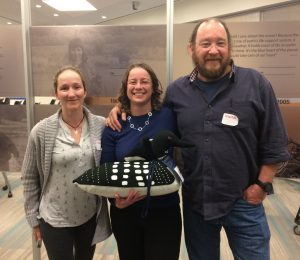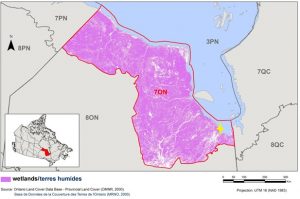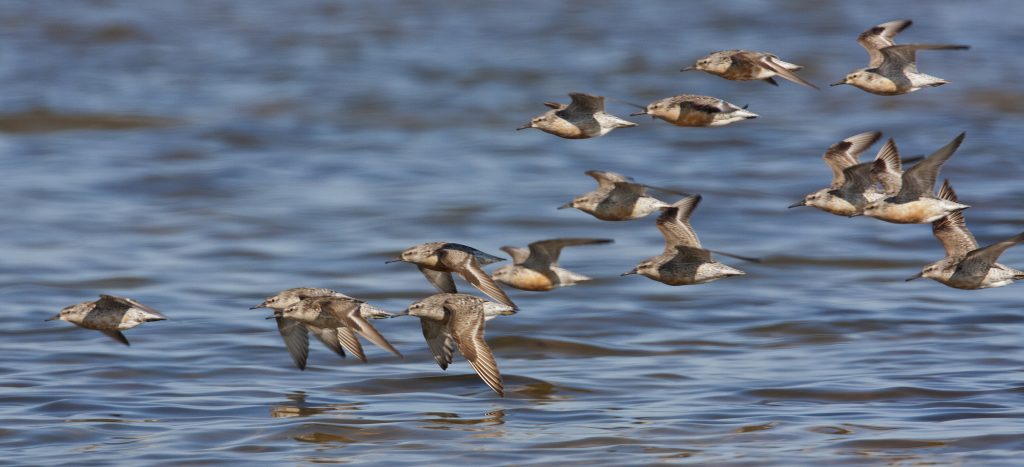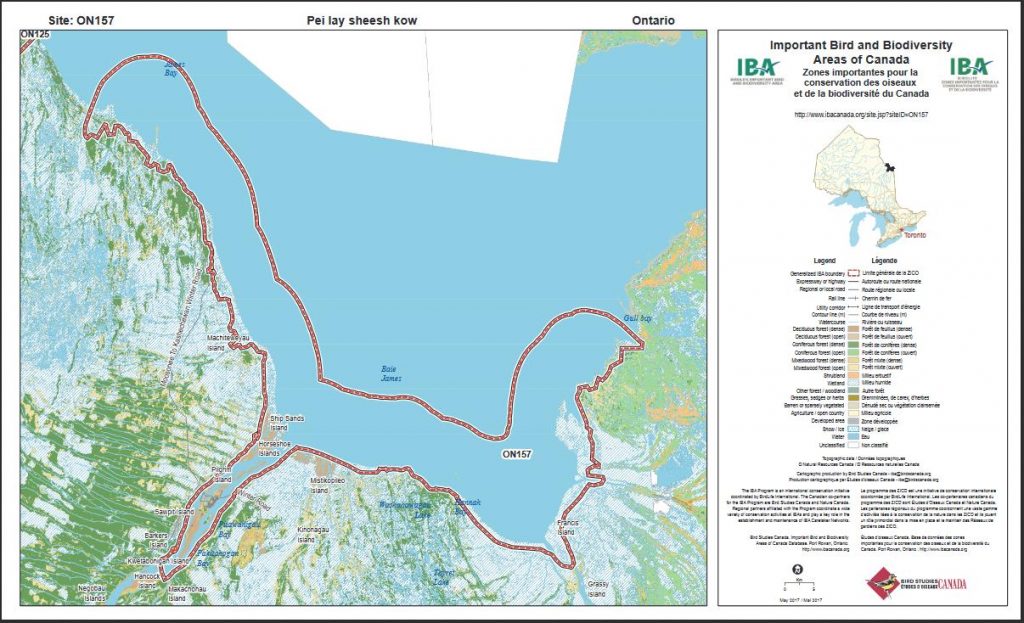NABCI-Canada – Update
The NABCI-Canada Council had teleconference calls on January 19, 2018 and April 3, 2018. During the earlier teleconference, Council agreed on 8 NABCI-Canada Priorities. These priorities, associated with each of NABCI-Canada’s four roles, are:
Coordinate:
- Collaborate with habitat conservation partnerships (such as Joint Ventures) for effective all-bird conservation.
- Ensure dynamic partnerships to actively implement bird conservation at multiple scales across Canada.
Communicate:
- Coordinate the periodic production of the State of the Birds reports.
- Showcase success stories, best practices and interesting pilot projects that demonstrate progress especially for bird groups at high risk (grassland birds, shorebirds, seabirds and aerial insectivores).
Track Bird Conservation:
- Advocate for a national habitat monitoring system to support adaptive management of bird conservation.
- Coordinate the development of a comprehensive tracking system of bird conservation action in Canada that supports progress reporting and adaptive management.
Influence Policy:
- Assist cooperation on migratory bird conservation across the Western Hemisphere through existing, or by creating new, international agreements.
- Successfully influence invasive species policies and best practices for wetlands, grasslands and islands/seabirds.
Following this teleconference held in January 2018, four temporary working groups were formed to develop more specific actions that would contribute to achieving the aforementioned priorities. As we incorporate these actions into a work plan, establish timelines for each and draw linkages between them, organizations can begin showing interest in participating in committees that will be responsible for advancing these actions. For more information on the draft work plan or to get involved in achieving the NABCI-Canada priorities, please contact the NABCI-Canada Coordinator directly ( ec.icoancanada-nabcicanada.ec@canada.ca ).
News from Partners

Photo of 3 NABCI Coordinators (left to right: Marie-France Noel (Canada), Judith Scarl (USA) and Humberto Berlanga (Mexico)
U.S. NABCI Committee: The 3 NABCI Coordinators met for the first time in many years during the U.S. NABCI Committee meeting in Arlington, VA in February 2018. The three NABCI Coordinators, along with the US NABCI International Subcommittee members Greg Butcher, Deb Hahn, Rob Clay, Scott Johnston, and Guy Foulks discussed trinational collaboration and the Hemispheric Vision implementation plan. We hope to carry on developing this collaborative work, combining and leveraging resources as NABCI-Canada continues to gain momentum!
Shorebird Conservation Partnership: The Pacific Americas Shorebird Conservation Strategy (PASCS) is a project involving more than 53 institutions and spanning across 14 countries along the Pacific Flyway! The David and Lucile Packard Foundation, the National Audubon Society, the U.S. Fish and Wildlife Service, the Canadian Wildlife Service, MUFG Union Bank Foundation, Pacific Birds Habitat Joint Venture, USDA Forest Service and private individuals provided financial support for its completion. Covering the entire Pacific Americas Flyway, it integrates conservation actions across the full suite of geographical, ecological and cultural landscapes. The PASCS describes how, across the globe, 45% of Arctic-nesting shorebirds are decreasing and within the flyway, 11% of shorebird populations demonstrate long-term declines; alarmingly, no populations show signs of increasing. At this stage, strategic conservation planning is critical to ensuring that priorities are addressed first and shorebird conservation initiatives are most effective and cost-efficient. Published in 2016, the PASCS will soon be entering its first phase of implementation. You can access the strategy in English or in Spanish on the U.S. Shorebird Conservation Partnership website.
Canadian Electricity Association: The Canadian Electricity Association’s (CEA) utility members recently completed Beneficial Management Practices (BMP) to guide work by its member companies. Based on extensive, first-hand experience of electricity facility construction and operation across Canada, this BMP is national in scope, but local in application. It includes a risk management framework and mitigation toolbox, from which members can apply selective situation-relevant, mitigative measures. While the BMP was developed with the intention of addressing interactions with migratory birds specifically, the general applicability of this document will benefit all bird species. We invite you to take a look!
The Canada Warbler in the Columbian Andes: Since 1970, Canada Warbler (Cardellina canadensis) populations have declined by over 70%. In 2008, it became federally listed as threatened under the Species at Risk Act. Threats, such as habitat loss and degradation in their wintering grounds in northern South America, are the primary factors causing their decline. ECCC’s Canadian Wildlife Service and Science & Technology branches have been supporting research on their wintering grounds led by Ana González, a Ph.D. student from the University of Saskatchewan. In this video, you can learn all about her fascinating work in the Colombian Andes. The research, currently in its fifth season, aims at better understanding the Canada Warbler’s specific habitat needs and the importance of shade-grown coffee plantations for its winter survival, as well as other factors causing their downward population trend. This project is part of the Canada Warbler International Conservation Initiative (CWICI), a collaborative network across this species’ range of government agencies and non-government organizations. CWICI is currently in the process of finalizing a hemisphere-wide action plan intended to inform conservation efforts throughout the species’ full life-cycle.
Stories from the Field
Written by Christian Friis, Wildlife Biologist at Ontario Region’s Canadian Wildlife Service

Hudson Bay Lowlands in Ontario and proportion of wetlands (in pink), showing Longridge Point’s location (star)
The chopper hasn’t turned off its rotors and a Yellow Rail is calling at my feet. It’s the first species I note when landing at Longridge Point on my first trip to the James Bay coast to monitor southbound migrant shorebirds in 2010. I’ve been back each year since, and despite hearing them, I still haven’t actually seen a Yellow Rail. They’re tricky little birds. When the deafening clap of the helicopter has left the area, it’s just you and the yellowlegs. Peaceful and virtually untouched by humanity, the James Bay coast offers vast expanses of tidal flats and intertidal wetlands that support thousands of shorebirds, waterbirds and waterfowl. The Hudson Bay Lowland is the third largest wetland complex on earth. The coastal ecosystems of southern Hudson Bay and James Bay constitute a global hotspot for breeding and staging water birds (including shorebirds, waterfowl, and loons) as well as other Neotropical migrants. It is estimated that most Red Knot, subspecies rufa, a large proportion of the global populations of Hudsonian Godwit, Semipalmated Sandpiper, White-rumped Sandpiper, Dunlin and several other shorebird species either breed in the lowlands or use areas along the coast to add fat reserves as well as undertake partial moults in preparation for their southbound migrations to the southern hemisphere.
The value of the Lowland for birds has been well known to the Cree of Hudson Bay and James Bay for millennia. Migrating waterfowl and shorebirds provide an income to local communities through ecotourism and hunting activities. While traditional interactions with the land have changed in recent times, the Cree are still very much connected to the land and its wildlife. Members of the Moose Cree First Nations have participated in field research at several of our sites since 2011. I anticipate that this participation will continue (and increase) as members of the First Nations community continue to develop a stronger relationship with the organizations involved in this research. Today, families from Moose Factory loan us their hunt camps during the summer months as bases for our field operations. Collaborating with the Moose Cree First Nation has allowed our crews to work in relative comfort each season in close proximity to our study sites.
The James Bay shorebird project completed its eighth season in 2017. It first started as a species at risk expedition led by the Royal Ontario Museum’s (ROM) Mark Peck with funding from the Ontario Ministry of Natural Resources and Forestry in 2009. Since then, the project has grown to include annual monitoring at three field sites between the Moose and Albany rivers for six to eight weeks beginning in mid-July. Today, Environment and Climate Change Canada’s Canadian Wildlife Service and Wildlife and Landscape Science, the Ontario Ministry of Natural Resources and Forestry, Bird Studies Canada, Moose Cree First Nation, and Trent University are conducting this collaborative project, in conjunction with a larger conservation initiative involving James Bay first nations and Nature Canada. The ROM was a partner until 2016, but thankfully, other partners now continue the good work that the ROM founded. Although the monitoring and research focuses on shorebirds, the partner agencies also conduct work on other migratory birds, other wildlife, and habitats on the James Bay Coast.
Shorebirds as a group have shown consistent population declines in recent years. Population monitoring is crucial to determine the extent and magnitude of this decline and is the basis of an international program called PRISM (Program for Regional and International Shorebird Monitoring) designed specifically for monitoring abundance and other vital rates used by the project. One approach used by PRISM is to monitor the passage of migrants and develop a population index from these data. This method, used since the early 1970, has proven useful in the absence of other techniques, such as monitoring breeding grounds.

Red Knots, rufa subspecies in Piskwamish Point (south of Longridge Point). Photo courtesy of Ron Ridout
We incorporate PRISM in the project to monitor migrant shorebirds that use areas along the James Bay coast as a stopover and for refueling in preparation for their southbound migrations to the southern hemisphere. Historical and recent research establishes James Bay as being on a major migration route for over 25 species of shorebirds. The Bay contains important staging sites for southbound adult and juvenile shorebirds; and the area may play an important role during spring migration for some species. A special case is the Red Knot (rufa population). This subspecies is at critically low levels and has been designated Endangered both federally and provincially in Ontario. Current estimates indicate that at least 25% of the rufa population use our study sites during southbound migration. Continued work with new technologies, such as the Motus Wildlife Tracking System, will further refine our understanding of the passage populations of migrants using the James Bay coast.
Six Important Bird Areas (IBA) straddle the southern James Bay coastlines in Ontario, Quebec, and Nunavut. Of these, portions of only three IBAs contain Migratory Bird Sanctuaries (MBS), which are formally protected through provincial or federal legislation/regulation. They are the Akimiski Island MBS, Moose River estuary MBS, and Hannah Bay MBS. The remaining sites have no legal form of protection. Pioneer research on shorebirds along James Bay in the 1970s led to the establishment of the Western Hemisphere Shorebird Reserve Network in 1985. In the 1990s, Canadian Wildlife Service compiled an inventory of potential WHSRN sites along both Hudson Bay and James
Bay that stands today. The site selection for this project was based on these seminal surveys. In 2017, the Moose Cree First Nation nominated the area within their homelands as a WHSRN Site of Hemispheric Importance. This is a sign of a successful partnership that we would like to continue fostering and a significant achievement for shorebird research and conservation!
To learn more about the project, visit our website https://www.jamesbayshorebirdproject.com/, check out our Facebook page https://www.facebook.com/jamesbayshorebirdproject/, and follow us on Twitter @JBShorebirds

